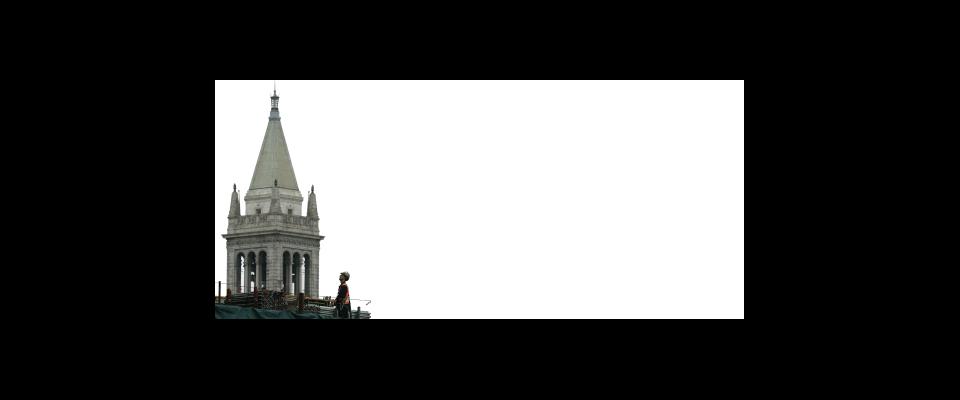Enter the campus from North Gate, stroll south down the wide path from the top of the rise into the swale of Memorial Glade and there it is, front and center, inscribed in granite in letters 3 feet tall: THE UNIVERSITY LIBRARY. Doe Library, a century old last year, magnificent heart of UC Berkeley.
But will it always be? The rise of the Internet, tablets, and e-books is raising serious questions about the necessity of continuing to house dusty paper volumes on what is, after all, prime university real estate.
“Fifteen years from now you won’t need a library,” a jocund geneticist, Professor Michael Eisen, says from his office in sunny Stanley Hall, a strikingly modern edifice near the eastern edge of campus. “There’s no good reason to have a central collection. I don’t see how on a campus with limited space that it’s wise to have a basement filled with books.”
Professor Margaretta Lovell is aghast at the notion. The art historian sits in her office atop Doe Library, a spacious room that still has the original shelving and fixtures. “I want to defend what is still useful,” Lovell states, sticking up for both the library itself and the people it employs. As she noted with alarm in an internal memorandum, “Funding cuts to the library budget since 2007 have resulted in the loss of 25 percent of the library’s staff.”
Lovell and Eisen represent sharply contrasting views in the sometimes contentious debate over the future of Berkeley’s 11.6 million-volume library system. In mid-October, a distinguished panel released its formal report and recommendations, which include consolidating many of the “specialty libraries,” while beefing up digitization, trimming the book collections, and adding almost two dozen more highly trained librarians.
Historian and social sciences dean Carla Hesse co-chaired the Commission on the Future of the Library. Lovell was a member. Eisen filed a sort of amicus brief. The only issue everyone seems to agree upon is that the prices of scientific journals are, to quote Harvard librarian Robert Darnton, “disgraceful.”
Hesse works in the jarringly renovated Durant Hall, where the classic Beaux Arts shell now clashes with a chrome and glass interior. “I am a historian of the book,” she says. “I love books.” But when it comes to the University Library, she feels it is “not legible,” which in common speech means “it’s hard to use.” She believes the system would benefit if the specialty collections had their own discrete spaces within Doe.
For her part, Lovell concedes that some of the specialty libraries may have “outlived their usefulness,” but notes in her memorandum that if circulation figures were the measure of usefulness, then the venerated Bancroft Library “would be the first to go.”
Hesse acknowledges that the battle has been messy and heated at times, but thinks the library’s staunchest defenders “are more anxious than they need to be.” As if to assuage those anxieties the first line of the commission’s executive summary stresses that, “Libraries—as both places and services—will be more, rather than less, critical to University research and teaching in the next twenty years.”
At the fulcrum of the debate is University Librarian Thomas Leonard, whose office has a premium view of the Campanile, placed as it is in a corner of the same building as the recently overhauled and internationally acclaimed Bancroft Library.
As we strolled through the relatively new $50 million underground stacks that link Doe and Moffitt libraries, I asked him what he thinks the University Library will look like in 20 years.
Leonard paused.
“I don’t think it makes sense to organize a campus around shelves,” he answered. “It used to. Not anymore.”





















